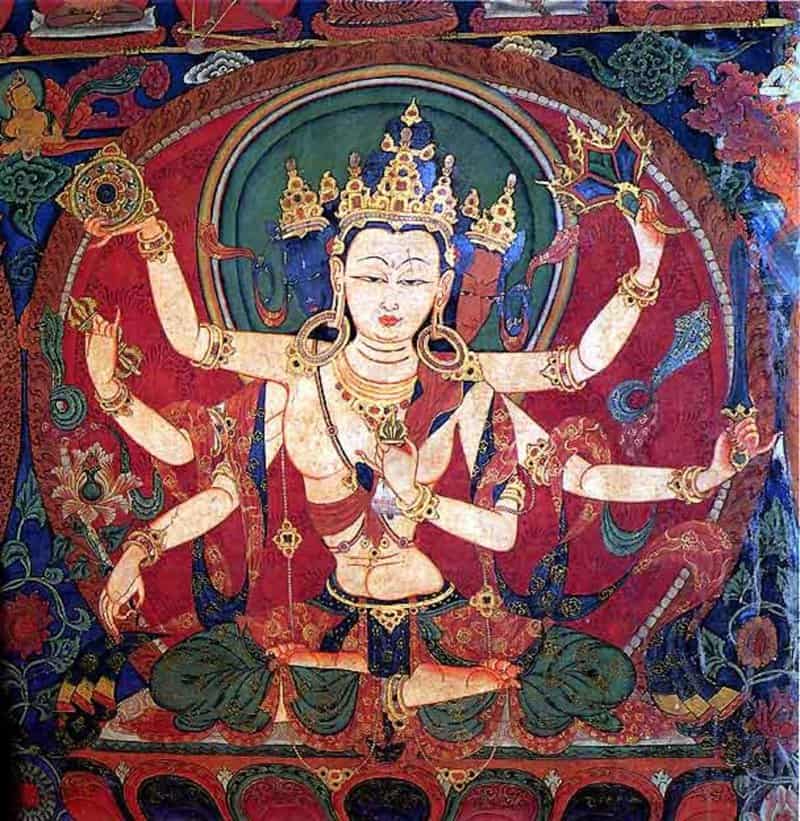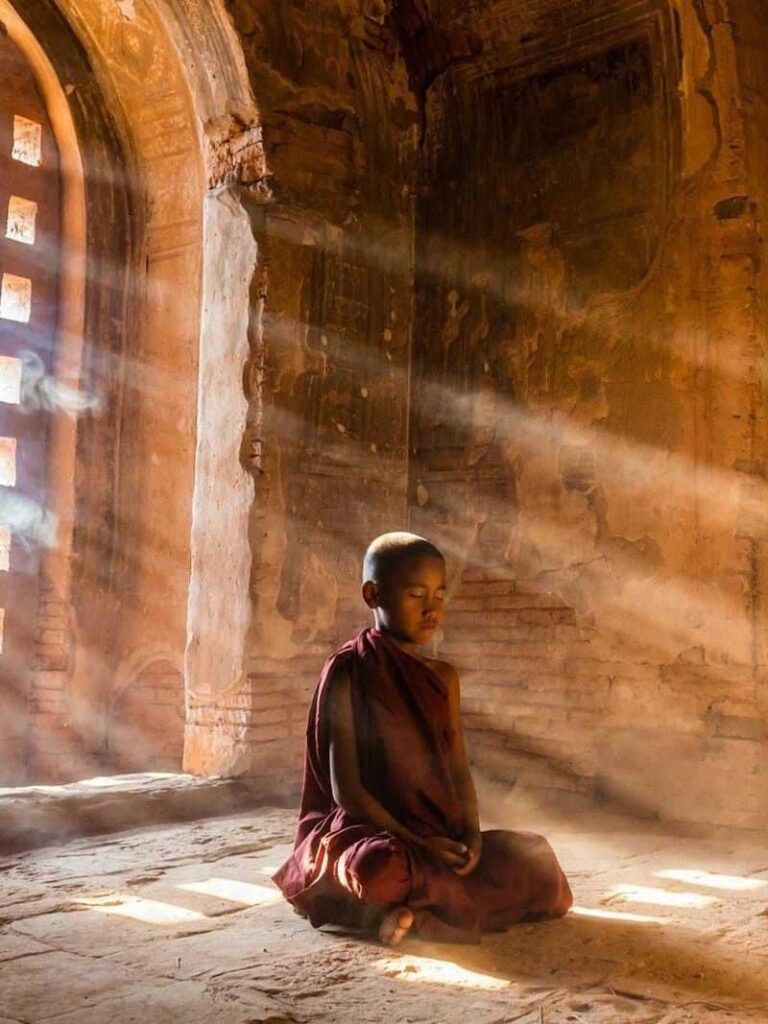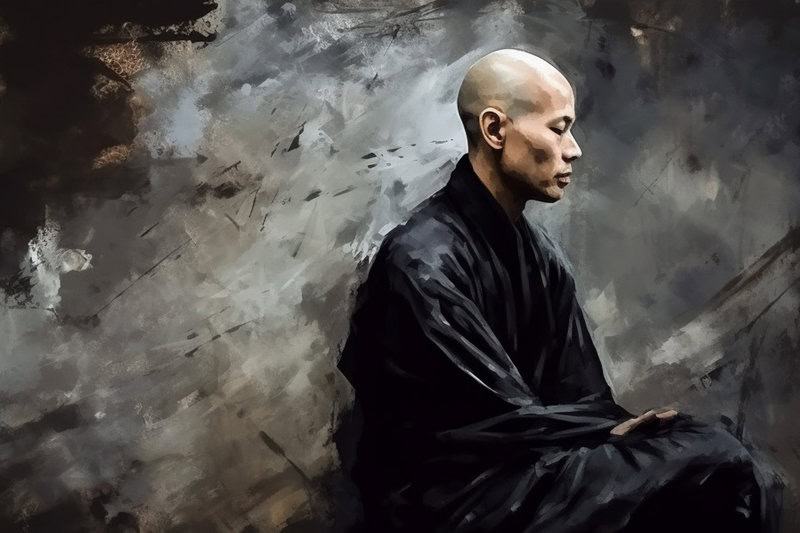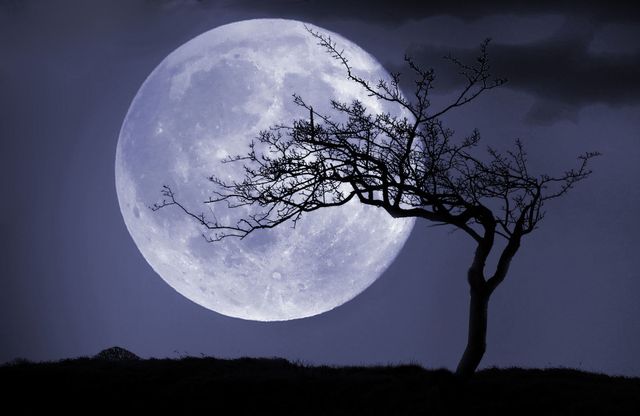I thought I’d respond to Al’s comment on my previous post here, and share something of how Deity mediation works in a Vajrayana and Mahamudra context.
Seems like you’re in a great space – if I may ask – how much “concentration” is applied during your meditation – I do recall you mentioning devotional aspect – does it mainly consist of chanting/mantra?
There is so much I could say here, but will just share a few key threads or aspects.

Vajrayana Deity Yoga
My main formal mediation practice is a deity yoga practice, and is therefore a Vajrayana practice. As such, it utilises a different model of working to either Hinayana or Mahayana practices, in that it is a resultant vehicle practice, rather than a causal vehicle practice. This means that you are not really working at generating the causes of Enlightenment as a means of practice, but instead are practicing directly on the result, on the Enlightened mind itself as a means of practice.
Taking a deity as an object of meditation fits this model, in that you are very much focussed on not just what you aspire to become, as an object of concentration, but from a Vajrayana perspective, what you already are, but just haven’t realised yet. So you are practicing seeing the world as a Buddha sees the world, if you like. Rather than building up causes so that you can eventually become a Buddha and therefore see and act from a perspective of Awakening, you just practice being Awake, in a sense.
Resting in Buddha Nature
So in the course of the deity practice, you make direct contact with your Buddha nature, and with your realisation of the true nature of mind, and how things are, and you rest in that as a basis for practice. That direct contact with your Buddha Nature, and realisation of the nature of mind has come through transmission from your teacher, by the way, as it is they who introduce us to it, either through initiation into the mind of a particular deity, or through direct pointing out instructions. From that perspective of resting in the nature of your mind, you then run through a whole bunch of stuff which is designed to bring that resting in your nature into clearer and truer focus. It’s not that you are creating something that isn’t there yet, more that you are allowing what actually is (rather than what you deludedly think is) into view, and stabilising that view as an actuality.
In the course of the meditation, you run through all the factors and aspects which take one from deepest ignorance right through to ultimate awakening. But, one again doesn’t do that from the perspective of generating these as causes, but more from the point of view of each remembrance of them allows what already is to come further into view and focus.
So one goes through various aspects of renunciation, of Refuge, of confession, of Bodhisattva Vows and generation of Bodhicitta, of bringing Emptiness into view, of bringing out the luminous aspect of mind, of recognising the various inseparable qualities of mind, such as bliss-emptiness, clarity-emptiness, of same-taste and so on .. each part wiping a little away of the dust of obscuration from the mirror of mind … wiping away a little of the seeming obscurations and defilements which are not our true nature, and which separate us from what we already and actually are.
Allowing the flowering of what is
We use these means to allow the flowering of what is through focussing on how things actually are, in reality, in essence, but which we are usually unable to see due to our deluded way of seeing. And therefore, seeing things as they are, we are now able to act on the basis of how things are … so we can manifest the qualities of Enlightened mind, and not just see them.
Of course, that doesn’t happen in one go, so to speak, but each time we practice on the result, we more clearly bring how things are into view, and more and more free up what is there but trapped or cut off by our illusions and ignorance.
Body, speech and mind of Buddha
Again with Vajrayana, one uses as many means as possible to bring this all into focus, and so one uses body, speech and mind to all play their part, or, if you like, we use body as a Buddha, as things are, we practice the Buddha’s speech and practice the Buddha or realised mind. So chanting is practicing that Vajra speech. And Mudra’s or hand gestures are practicing Vajra Body. In deity meditation then, we tend to be much more active in body and speech than most forms of meditation, and those forms of meditation in Hinayana and Mahayana approaches too.
Throughout the Sadhana (Sanskrit) or Drup Tap (Tibetan) – the ritual text used in Deity yoga to actualise this resultant, we are engaged in acts of body, speech and mind in this way. And as mentioned before, we run through a whole series of views, aspirations, and reflections as part of this process of bringing what is into view. It’s not that we have to change our mind from how it is into a mind that is emptiness and luminosity inseparable, for example, but rather one of recognising what already is, that our mind is emptiness-luminosity inseparability.
It’s not that we really create something that is not there, or imagine something which is not there … we are that deity in reality, we have vajra speech, and vajra body … we just utilise these skilful means to bring what actually is into focus, and to allow our misperceptions, our deluded way of seeing, thinking and action to drop away. As those misperceptions drop away, then those qualities already inherent in mind are just freed to manifest in action. They are not generated, or caused or created . .they are simply liberated, and allowed to be.
In terms of concentration, there is obviously a lot going on compared to many approaches to meditation, from one angle. All this chanting, mudras, and visualisations. Deities are arising and dissolving, all manner of things are being visualised, and all manner of reflections are coming into view and passing away. So how does one concentrate in all this, and how does that compare to, say, mindfulness of breathing, where one is focussed on one object throughout?
Concentration on the whole Dharma drama
It might seem as though one is not really developing one pointed concentration in Deity yoga, but that is not the case. Though many things are being brought to mind, and a whole drama of visualisation plays out before your minds eye, these are all focussed on with concentration. Nothing is grasped, and whatever is brought to mind is the object, at that moment. So concentration is very much on a moving target, so to speak, in that a succession of ‘things’ are concentrated upon. In a sense, this is no different from watching the breath, as the breath is not a static object .. but rather a succession of unique individual objects, or better still, just a succession of seemingly existing objects, but actually not even that .. appearances seemingly arising .. which we watch in Shamatha meditation.

Generation and Completion stages
Deity meditation follows what are known as Development (or Generation) and Completion stages, the former revolves around the visualisation of the deity (and a whole bunch more), and the later dissolving all images, and resting in the nature of mind. To a degree, the development stage is more shamatha, and the completion stage is more of vipassana. But, having said that, vipassana and shamatha are both there, supporting each other throughout the practice.
For me, to speak more personally, there has been an extraordinary blooming as a result of taking on this type of practice, after years of other methods. Truly my concentration has developed such that I don’t need to be in particularly conducive conditions, whether in terms of environment or my own mental states, in order for me to meditate and really benefit from that meditation. And those qualities which I’ve suggested are allowed to come into view, those things which are inherent (to use a very un-Dharmic term!), which are our Buddha Nature … those things are blossoming as a result.
But, I can’t imagine that that would have been the case without many long years of focussing on the breath and other methods which are of the Hinayana and Mahayana vehicles. Vajrayana is entirely built on the other vehicles, and both in terms of view and method, it needs a certain amount of realisation and actualisation of both in order for it to ‘work’. Indeed, without that basis, it may actually be detrimental and cause more harm than good.
Just empty arisings
So, playing musical instruments, chanting, hand mudras, a whole drama of visualisation, and multiple reflections … they are all going on throughout the practice, and all things that arise in mind are incorporated into it. So what might have seemed like a ‘distraction’ from my old perspective is now just an aspect of mind, just an aspect of the deity and their mandala, just one more seeming arising, which is empty, and yet apparent … just the play of mind which is unobstructed and perfect as it is.
It’s just all a bunch of skilful means which allows me to see how things actually are, to actualise what I’d not really been able to see, and to clear away the illusory obstacles which block off the free flow of enlightened qualities which are the nature of mind itself. Purify one’s seeing, and one sees how things truly are. Seeing how things are allows one to function freely from how things are. Changing one’s view in this way simply allows what already is to manifest freely. Nothing is newly created, nothing has been caused as such. Action takes place, and yet no action takes place. Things appear to change, and yet nothing changes. We seem to go on a journey, but actually the journey never leaves home. Just to wake up, to awaken, to come back home (when we never truly left).





it's not a concept – it's an experience.
It's not a concept – it's an experience.
Hi Chodpa, great site, you would be very interested in mine too I think, it is a sex drugs rock and roll story about chod, dzogchen, self liberation, the siddhis, the six realms, one taste, crazy wisdom, the Apocalypse. My site is http://www.buddhabrats.com have a read through the free chapters and I am happy to send you a free copy of the book if you are interested.
Regards
Adamas